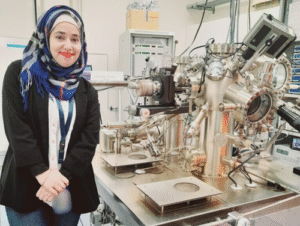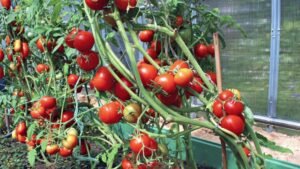Wednesday, 22 October 2025
Feeding the Future: Unlocking Equity and Adaptation in Asia-Pacific Food Systems
Ana Maria Loboguerrero, Director of Adaptive and Equitable Food Systems, Gates Foundation As the Asia-Pacific region confronts increasing climate pressures, growing gender disparities, and fragmented trade systems, the need to…

Ana Maria Loboguerrero, Director of Adaptive and Equitable Food Systems, Gates Foundation
As the Asia-Pacific region confronts increasing climate pressures, growing gender disparities, and fragmented trade systems, the need to develop food systems that are both adaptive and equitable has never been more urgent. In this comprehensive interview with NUFFOODS Spectrum, Ana Maria Loboguerrero, Director of Adaptive and Equitable Food Systems at the Gates Foundation, shares her insights on what is necessary to transform agriculture across the APAC region. She discusses empowering smallholder farmers, integrating digital tools, driving policy reform, and fostering regional collaboration.
Drawing on recent data related to climate and development, Loboguerrero examines the unique challenges faced by the region. She highlights promising innovations, such as India’s livestock traceability system and AI-powered weather forecasting, and articulates an ambitious vision for inclusive, climate-resilient food systems by the year 2050.ng innovations such as India’s livestock traceability system and AI-powered weather forecasting, and lays out a bold vision for inclusive, climate-resilient food systems by 2050.
What makes the APAC region unique when it comes to building adaptive and equitable food systems?
In APAC—and specifically South Asia—over 80 per cent of households rely on smallholder or subsistence farming to make a living. Most of these farms are under two hectares, meaning simply improving productivity does not always translate into more income, keeping many farmers in poverty. This challenge is further exacerbated by climate change. According to the 2024 Asia-Pacific Climate Report, South Asia will require between $102 billion and $431 billion annually for climate adaptation— far more than the $34 billion of adaptation finance mobilised in the region in 2021-2022. Gender inequality adds another layer to the challenge. While women represent the majority of the agriculture labor force—like in India where women represent 67% of workers in agrifood systems— they are often left out of decision-making and lack access to resources. This is why efforts in APAC demand holistic, integrated interventions across nutrition, climate resilience, and women’s access to resources.
How are global and regional trade dynamics affecting local food system equity in APAC?
Today, South Asia primarily exports staple crops and processed products around the world—including to the Middle East and North America—missing opportunities to build resilient local ecosystems through collaboration with neighbouring countries. Meanwhile, variations in regulations and logistics between countries in South Asia limit progress, meaning intraregional trade remains underdeveloped and Harmonising. Harmonizing trade can help to reduce food prices and buffer against climate shocks, while stimulating crop diversification and helping prepare unified response systems for the climate-driven spread of pests.
What promising technologies or digital tools are helping make APAC food systems more adaptive and inclusive?
Digital tools and technologies play a key role in helping smallholder farmers reduce food loss and waste, prepare for climate stressors, and connect to the supply chain. Across food systems, we are seeing the adoption of these technologies increase through rural outreach, training and financial services offerings.
For example, the Indian National Digital Livestock Mission now tags over 95 per cent of the country’s ~303 million cows with unique IDs—including vaccination records, parentage, and milk yield metrics—unlocking traceability from farm to processor. By reducing losses and helping to maintain quality, this digital infrastructure improves smallholder incomes and allows them to make the most of premium export markets. Meanwhile, the Agriculture Innovation Mechanism for Scale (AIM for Scale), launched in 2024, is deploying AI-based weather forecasting across Asia. Early pilots in India show reduced farmer debt and savings increases of up to 10 per cent.
How well are national policies in APAC addressing the dual goals of climate adaptation and food equity? Where are the gaps?
National policies across South Asia are helping drive the region’s shift toward food self-sufficiency. In India, for example, the government’s National Mission on Sustainable Agriculture (NMSA) is promoting climate-resilient farming, water-use efficiency, and improved soil health. Over the years to come, it will be important to continue strengthening nutrition security across the region. By making nutritious diets more affordable and accessible for everyone, South Asia can further its commitments to food system transformation and healthy lives for all.
Meanwhile, across South Asia and beyond, climate-driven extremes continue to devastate yields, further straining food systems, exacerbated by growing populations and water shortages. National adaptation strategies are emerging, however financing is lacking: COP29 discussions noted that per cent of public climate finance targets smallholder agriculture, despite these farmers producing up to 80 per cent of the region’s food. Moreover, gender considerations are still largely siloed, rather than woven into core agricultural and climate policies.
How can APAC countries collaborate better across borders to build resilient regional food systems?
Climate resilience across South Asia depends on cross-border alignment in regulatory standards, joint disease and pest surveillance, synchronised early warning systems, and shared R&D investments in crop, livestock, and climate innovations. The 2024 Asia-Pacific UN meeting highlighted the need for such alignment, urging institutional support for agriculture, fisheries, and nature-based food systems to build resilience. Establishing regional centres to coordinate responses to these challenges is essential to make regional trade more efficient while reducing production and transaction risk and increasing profit.
What does a truly adaptive and equitable food system look like in APAC by 2035 or 2050?
Such a system would deliver both food and nutrition security, while being climate shock-resilient—able to respond to and bounce back from floods, heatwaves, or disease outbreaks without raising food prices or impacting farmer livelihoods. It would embed climate-smart technologies at scale and centre on inclusivity, integrating marginalised groups, including women and smallholders, into governance and markets. By 2050, many APAC low- and middle-income countries would have transitioned towards high-income economies, leveraging inclusive, nutritious and resilient food systems as engines of growth.
What are three policy or investment priorities you believe must be urgently addressed to get there?
First, the region must dramatically increase adaptation finance directed to smallholder farmers. Second, policymakers should mandate systems-based planning, wherein nutrition, gender equity, and climate resilience are seen through a “growth lens” as core elements of food system transformation. Third, cooperation between countries—across agricultural research, emergency response, and trade policy—must be institutionalised through stable regional frameworks to enable long-term investments in shared climate-resilience infrastructure.
What gives you hope or optimism about the future of food systems in APAC?
Digital tools and technologies are now underpinning agricultural modernisation—from livestock traceability to AI-enhanced weather services—demonstrating that these innovations can meaningfully improve the lives and livelihoods of smallholder farmers in South Asia. Diet diversification is also increasing: pulses, oilseeds, fruits, vegetables, and the aquaculture sectors are now outstripping the growth rate of staple crops in South Asia. It’s also exciting to see multilateral forums—like the upcoming COP30 in Belém —prioritise climate-resilient food systems at the centre of SDG discussions. Despite formidable challenges, the convergence of technology, policy momentum, regional engagement, and innovation offers a credible path toward fair and nutritious climate-smart food systems.
Suchetana Choudhuri
suchetana.choudhuri@agrospectrumindia.com
Technology
Julius Meinl introduces industrially compostable capsules
Oct 17, 2025 | Beverages
Engineering Nutrition: Marico’s R&D Push to Redefine Everyday Wellness
Oct 17, 2025 | Food
Quantum leap to tackle Australian food security and student wellbeing
Oct 16, 2025 | Australia
Food Testing
ADM advances quality capabilities with opening of new Central Milling Laboratory
Oct 16, 2025 | Company News
South Australia now tomato virus free
Oct 13, 2025 | Australia
Inside Agilent’s Strategy to Make India Global Benchmark in Food Testing
Oct 10, 2025 | Food Safety and Testing
More Popular
South Africa’s Premier Group to acquire RFG Holdings
Oct 17, 2025 | Africa
Julius Meinl introduces industrially compostable capsules
Oct 17, 2025 | Beverages
Nestlé accelerates growth strategy with RIG-led investments and cost optimisation plans
Oct 17, 2025 | Company News






